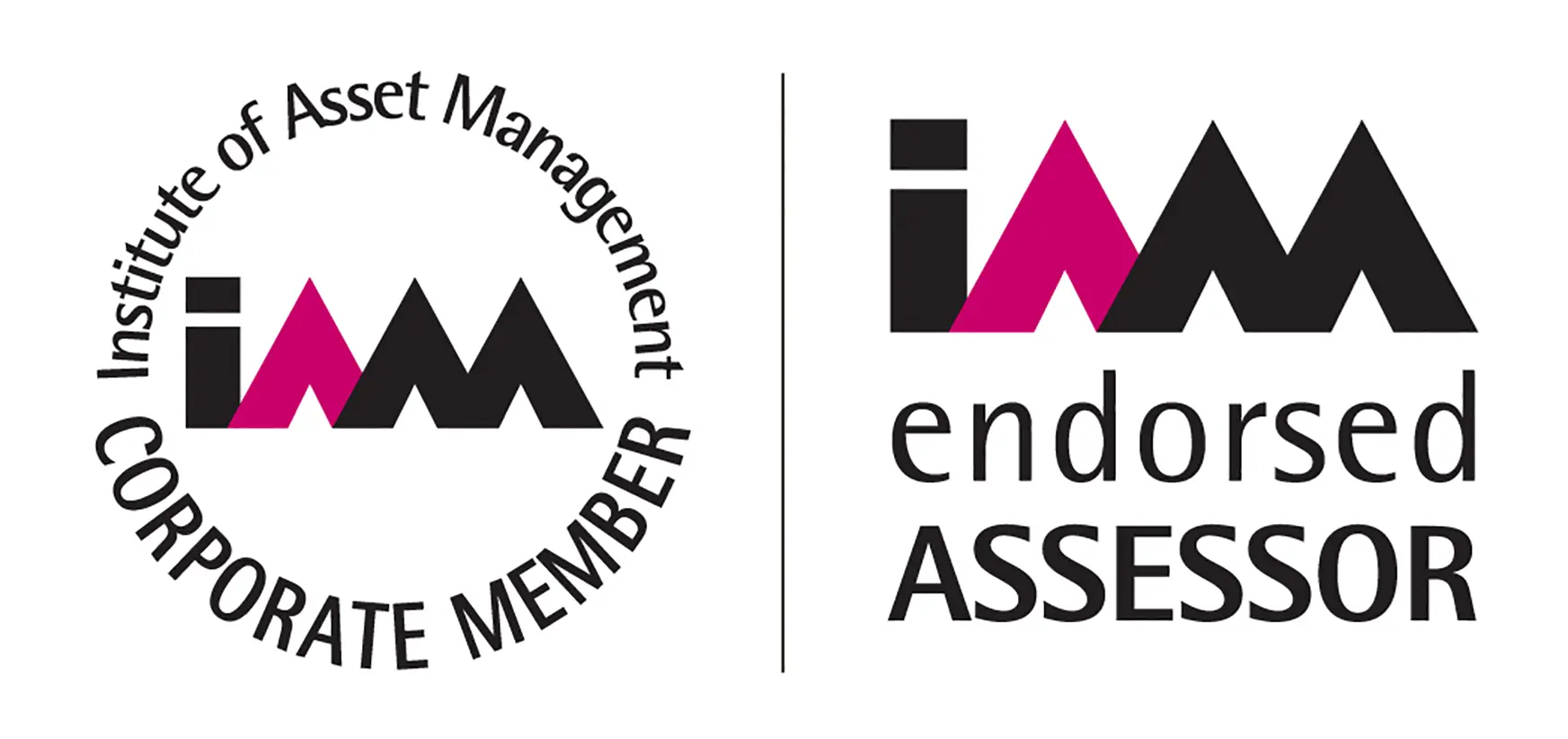OHROS Consulting Group has been at the forefront of Strategic Asset Management since the early 1990s. Our extensive experience with global utilities underscores market distinctions, with Europe leading in sophistication and the adoption of risk metrics. Notably, the U.S. market is increasingly recognizing the value of Strategic Asset Management, emphasizing the need for effective and comprehensive SAM.
While traditional perspectives concentrated on physical assets, this thought landscape is evolving. IT, data assets, and other elements not directly involved in electricity or gas production, transmission, and distribution are now following Asset Management guidelines.
Our standing as an industry leader is underscored by our recognition as an endorsed assessor and trainer by the Institute of Asset Management. This professional body represents those involved in acquiring, operating, and maintaining physical assets, especially critical infrastructure. We adhere to the principles of ISO 55000 (and its predecessor PAS 55) and the practical IAM Standard. This framework allows us to assess the alignment of organizations’ policies and practices with the fundamentals of asset management.
Our approach covers various areas, aiming to assist clients in maximizing their in-house expertise. Utilizing data-driven methodologies, we enable the efficient management of both physical and data/other assets, optimizing trade-offs among:
• Cost (minimizing long-term costs and maximizing return on investment),
• Performance (ensuring safe and reliable service to customers), and
• Risk (implementing mitigation strategies within established risk tolerance thresholds set by key stakeholders).


Evaluating the existing state of a utility’s Asset Management System, including the Operating Model, Processes, Information and Technology, and Culture/Competencies, allows for comparison to established industry standards like ISO 55000 and IAM. This comparison enables the assessment of overall Asset Management maturity. This process identifies specific actions needed to address pertinent gaps, customized to the unique considerations of each utility.
Incorporates strategic system resiliency and revitalization planning at the macro level, along with the optimization of life-cycle costs for individual assets at the micro level. This involves considerations such as long-term replacement strategy, decisions on repair versus replace, and maintenance strategies. Our methodologies and accompanying analytical tools effectively reconcile the gap between these two perspectives.
We offer centralized management for a group of projects/programs, starting from initial selection through an Investment Portfolio Optimization process to close-out. Our focus is on aiding clients in achieving their strategic objectives. This process, supported by dedicated software applications, ensures strategic oversight in the execution of projects/programs. It guarantees that the combined impact of the delivered portfolio optimizes the balance between value, risk avoidance, and expenditure. This area gains significance due to (1) the expected substantial increase in investment and program funding in the next decade, (2) escalating customer expectations for reliability and responsiveness, (3) the growing necessity to modernize electric systems in the context of the Utility of the Future, and (4) the prevalence of regulatory and environmental mandates.
Our role in supporting implementation is contingent on established interaction protocols with our clients. We aim to strike a balance between autonomously producing final deliverables (appearing most efficient) and providing clients with input (frameworks, criteria, and approaches) to empower them in producing the products themselves, fostering a sense of “ownership” (most sustainable).
For repeatable practices and processes, especially across all asset classes, we typically collaborate closely with our clients’ key players for a defined period. We then transition to an on-call role as their organization takes charge of development. Our efforts manifest in the following ways:
Even our most advanced clients maintain a commitment to continuous improvement in operating their Asset Management System. We stand ready to support them in this pursuit, encompassing:

Depending on the orientation of our client, OHROS Consulting Group will adopt one of three standards in performing a gap analysis (ISO 55000 standards, IAM or less formal Industry Best Practices). Independent of the standard, we organize our observations, implications, recommendations around four domains (Operating Model, Processes, Information and Technology and Culture / Competencies).



Our approach to asset lifecycle planning acknowledges the complexity of addressing aging and deteriorating assets. This is done amidst several seemingly conflicting objectives competing for funding.


Copyright 2024, OHROS Energy group B.V. All Rights Reserved
Depending on the orientation of our client, OHROS Consulting Group will adopt one of three standards in performing a gap analysis (ISO 55000 standards, IAM or less formal Industry Best Practices). Independent of the standard, we organize our observations, implications, recommendations around four domains (Operating Model, Processes, Information and Technology and Culture / Competencies).
We then categorize the specific gap-closing actions, based on their projected impact to an effective Asset Management System, estimated cost to implement, and ease of implementation. The final deliverable of the Baseline Assessment is an Asset Management Implementation Roadmap, a high-level time-phased and prioritized view of the initiatives to meet a utility’s aspirations regarding Asset Management.

OHROS Consulting Group’s industry best practice Spend Optimization Suite (SOS) solution has a proven track record across multiple jurisdictions within the electric, gas and water utility industries. In linking investment decisions to corporate strategy, actions can be defined (and later evaluated based on measurable outcomes) to improve overall business performance. Focused strictly on establishing optimum capital investment and O&M spending program portfolios, the SOS provides a structured approach to ensure a comprehensive, consistent and transparent process aligned with the basic of tenets of effective Asset Management.
Questions addressed through the process and supporting application include:
Simply stated, SOS is both a process and a practical set of tools designed to provide users with the information needed to make tough but defensible investment and spending decisions; but more than that, it drives strategic thinking into an organization. All levels of a utility organization will start to understand the strategic implications of available investment or spending choices and align their decisions accordingly. Not only will the strategy of a business become more evident, there will also be increased accountability for the results that specific investments and programs are supposed to provide.
In application the design reflects a collaboration of several disciplines, including the latest thinking in Asset Management, Operations Research, Organizational Behavior, and Industrial Psychology. Its function is not just to provide a mathematical model to determine an optimal portfolio, but also to improve a utility’s decision-making ability.
You might also be interested in Spend Optimization Suite (SOS)
Underlying our approach is the tenet that risk-based economics rather than only technical judgment should drive the decisions around how best to invest in assets. In so doing, we assist our clients in minimizing total life-cycle costs (e.g, capital, maintenance and implicit costs related to failures). Key inputs driving our approach include:
We will work with you to build these inputs into a fully tested and operational Asset Risk Decision Model, customized to support your current and future vision regarding the management of your critical assets, with outputs that can support key decisions regarding specific interventions to apply to each asset. The outputs of this effort include risk-based asset replacement profiles and input into capital investment and program spending portfolio planning.
Our approach to asset lifecycle planning also acknowledges the complexity of addressing aging and deteriorating assets amidst several seemingly conflicting objectives competing for funding, including the:
There is much attention paid to and excitement generated around the use of new technologies and automation platforms. However, we must also address a number of technical and financial legacy issues; all while dealing with the realities of financial constraints, social factors and differing perspectives / priorities of external stakeholders. Timing of course is critical, implying the need to leverage existing frameworks and analytical constructs to develop a plan that:
We offer these frameworks and an established methodology to meet the challenge (refer to figure on next page), working with your staff to formulate initiatives (some oriented towards addressing technical and financial legacies, and others more futuristic in terms of improved communication and automation). We will provide assistance in estimating the costs and benefits associated with each initiative and aggregate them to form the bases of a fully operationalized, yet flexible plan.
You might also be interested in DRˣ: Distribution Reliability Excellence
In applying the various categories of maintenance to form an optimum maintenance program, our approach recognizes that the answer does not lie in the extremes:
Rather, a well-orchestrated blend of the insights gleaned from Asset Health Indexing (for those asset classes deemed critical), practical realities related to warranties and legal / regulatory requirements, and engineering-driven technical requirements will reveal an optimal mix.
An anticipated outcome of an optimum Maintenance Program will include: